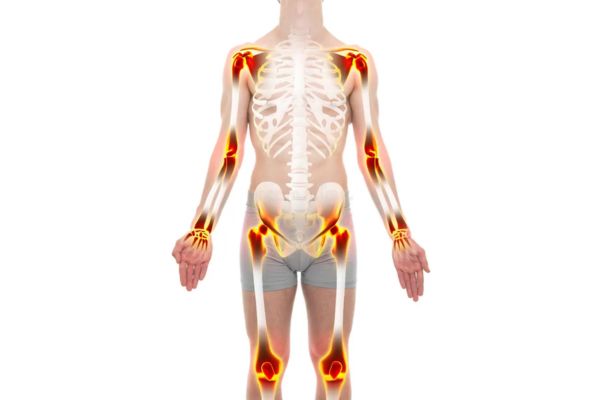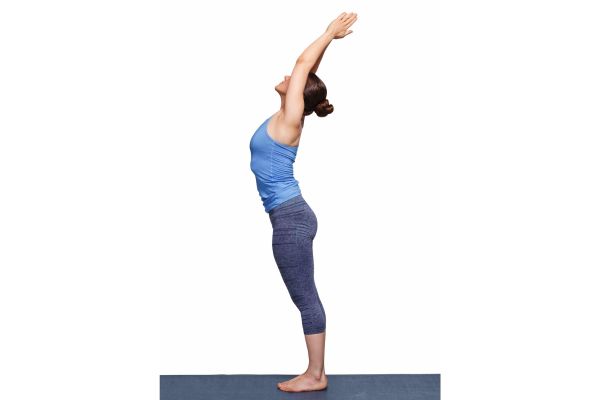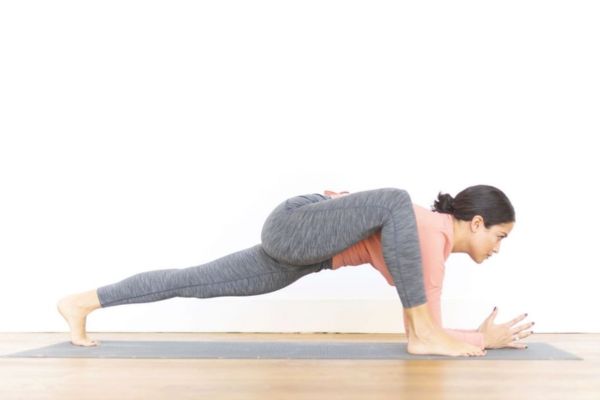Yoga has long been known for its holistic approach to well-being, but as the practice gains popularity, more students and teachers are seeking a deeper understanding of the science behind it. In yoga teacher training and practice, anatomy and physiology play essential roles, as they inform how and why each pose affects our bodies and minds. For yoga classes based in Thane, especially those offering teacher training, emphasizing this technical knowledge can build credibility and attract students eager to learn from a knowledgeable source.
This guide delves into the fundamentals of anatomy and physiology in yoga, explaining how various poses impact key systems in the body, from the musculoskeletal and cardiovascular systems to the nervous and respiratory systems. By understanding how yoga interacts with these systems, practitioners and teachers alike can optimize their practice, reduce injury risk, and achieve better overall results.

Why Anatomy and Physiology Matter in Yoga
An understanding of anatomy and physiology is critical in yoga to ensure safe practice, effective teaching, and meaningful alignment. This knowledge enables yoga teachers to:
- Create Safe Sequences: Recognizing the anatomical structure of each muscle group and joint helps teachers build sequences that minimize strain and prevent injuries.
- Address Individual Needs: With anatomical knowledge, instructors can modify poses based on students’ unique physical limitations or strengths.
- Explain Benefits to Students: Being able to describe why a pose benefits specific muscles, organs, or systems adds value for students and enhances their connection to the practice.
Let’s explore how anatomy and physiology inform the practice of specific yoga poses and how they support major body systems.
1. The Musculoskeletal System and Yoga
The musculoskeletal system includes bones, muscles, and connective tissues like tendons and ligaments. In yoga, poses (asanas) focus heavily on stretching and strengthening these components to improve flexibility, balance, and strength.
Key Muscle Groups in Yoga
- Core Muscles: These include the abdominals, obliques, and lower back muscles, which support spinal alignment and balance. Poses like Plank Pose (Phalakasana) and Boat Pose (Navasana) engage the core, stabilizing the spine and enhancing core strength.
- Lower Body Muscles: Yoga involves numerous poses that engage the glutes, quadriceps, hamstrings, and calves. For example, Warrior II (Virabhadrasana II) strengthens the legs while also opening the hips. Strong leg muscles contribute to better posture and protect the knees in both yoga and everyday movements.
- Upper Body Muscles: The arms, shoulders, and upper back are strengthened through poses such as Downward-Facing Dog (Adho Mukha Svanasana) and Chaturanga Dandasana. Building strength in these areas promotes stability and reduces strain on the shoulder joints.
Flexibility and Range of Motion
Yoga is known for enhancing flexibility by lengthening muscles and releasing tension. Poses like Seated Forward Fold (Paschimottanasana) and Camel Pose (Ustrasana) target tight areas like the hamstrings and hip flexors, gradually increasing range of motion. By improving flexibility, practitioners can move more freely and reduce stiffness in daily life.

Joint Health and Mobility
Each yoga pose mobilizes the joints in a safe, controlled manner, which helps maintain joint health. Cat-Cow Pose (Marjaryasana-Bitilasana), for example, improves spinal flexibility and reduces compression, supporting overall back health. As we age, joint mobility can decline, but regular yoga practice can prevent and alleviate stiffness.
2. The Cardiovascular System and Yoga
The cardiovascular system—comprising the heart, blood vessels, and blood—benefits greatly from yoga. While yoga is often seen as a gentle practice, certain styles, like Vinyasa, increase the heart rate, providing cardiovascular benefits.
Poses that Promote Circulation
Yoga poses that involve inversion (where the head is below the heart) can enhance circulation by allowing blood to flow back to the heart more easily. Shoulder Stand (Sarvangasana) and Legs-Up-the-Wall Pose (Viparita Karani) are two examples of poses that boost circulation, aiding in the delivery of oxygen to various parts of the body and promoting cardiovascular health.
Stress Reduction and Heart Health
Yoga’s focus on controlled breathing (pranayama) and relaxation helps reduce stress, which positively impacts heart health. High stress levels can lead to increased blood pressure and a higher risk of cardiovascular disease. Practices like Alternate Nostril Breathing (Nadi Shodhana) calm the nervous system and reduce cortisol, lowering the risk of stress-related heart conditions.
Improving Lung Capacity
Breathwork practices are an integral part of yoga. Techniques like Diaphragmatic Breathing and Kapalabhati (Skull Shining Breath) expand lung capacity, enhancing oxygen intake and improving respiratory health. By training the lungs and diaphragm, yoga can make breathing more efficient, which is beneficial for overall endurance and stamina.
3. The Nervous System and Yoga
Yoga has a profound effect on the nervous system, particularly through its influence on the sympathetic and parasympathetic systems. The sympathetic nervous system controls the “fight or flight” response, while the parasympathetic nervous system regulates the “rest and digest” state.
Calming the Nervous System
Through slow, mindful movements and controlled breathing, yoga activates the parasympathetic nervous system, promoting relaxation and reducing stress. Child’s Pose (Balasana) and Savasana (Corpse Pose) are excellent poses for calming the mind and body, as they encourage a state of relaxation and recovery.

Reducing Anxiety and Depression
Scientific studies have shown that regular yoga practice can reduce symptoms of anxiety and depression by balancing neurotransmitters like serotonin and GABA (gamma-aminobutyric acid). Practices that focus on grounding and stability, like Mountain Pose (Tadasana) and Tree Pose (Vrksasana), can help individuals feel more centered, reducing feelings of stress and anxiety.
Enhancing Focus and Mental Clarity
Yoga enhances focus and mental clarity by integrating movement with breath and mindfulness. Practicing Trataka (Candle Gazing), for example, helps improve concentration by training the mind to focus on a single point. This can be particularly beneficial for students looking to improve their mental focus both on and off the mat.
4. The Digestive System and Yoga
The digestive system, responsible for breaking down food and absorbing nutrients, can also benefit from yoga. Certain poses and breathing exercises stimulate digestion and can relieve common issues like bloating and constipation.
Poses for Digestion
Twisting poses, such as Seated Twist (Ardha Matsyendrasana) and Revolved Triangle Pose (Parivrtta Trikonasana), are believed to massage the abdominal organs, aiding in digestion and elimination. These poses improve blood flow to the digestive tract and stimulate peristalsis, promoting a healthy gut.
Pranayama for Digestion
Breathing exercises like Kapalabhati and Bhastrika (Bellows Breath) increase circulation in the abdomen and improve digestion. By practicing these techniques regularly, practitioners can boost their metabolism and reduce digestive discomfort.
5. Yoga for Hormonal Balance and the Endocrine System
The endocrine system consists of glands that regulate hormones. Yoga can positively influence this system by reducing stress hormones and promoting the release of endorphins.
Poses that Stimulate Endocrine Glands
Specific poses can stimulate different endocrine glands, promoting hormonal balance. Headstand (Sirsasana) is known to influence the pineal and pituitary glands, supporting hormonal regulation. Meanwhile, Fish Pose (Matsyasana) stimulates the thyroid gland, which plays a crucial role in metabolism and energy levels.
Stress Reduction for Hormonal Health
Since chronic stress can disrupt the endocrine system, stress-relieving practices in yoga play a major role in maintaining hormonal health. Regularly practicing Meditation and Savasana helps manage stress and supports healthy hormone levels.
Why Technical Knowledge of Anatomy Benefits Yoga Teachers and Students
For yoga studios in Thane looking to attract students, offering anatomy-informed classes can be a powerful differentiator. When instructors have a solid grasp of anatomy, they can guide students with greater precision, making adjustments that enhance safety and effectiveness. This approach also appeals to more advanced practitioners who may be interested in pursuing a yoga teacher training program with a technical, science-based foundation.

Building Trust and Expertise in the Community
By sharing this knowledge in classes and blog content, a yoga studio establishes itself as a credible source of technical, knowledgeable instruction. This trust can attract a wider range of students, from beginners to advanced practitioners interested in pursuing yoga on a professional level.
Conclusion
Understanding the science behind yoga—particularly anatomy and physiology—empowers practitioners to deepen their practice and make safer, more informed choices. By focusing on the body’s systems and how they respond to different poses, yoga can become a tool for healing, stress relief, and overall wellness.
